SEPTEMBER 9, 2010 — Blogging from Rome isn’t easy. It’s like asking a child who rarely goes out to play to come in from the playground. To make that analogy complete … there’s no school bell. Rome is a Catholic playground in the sense that it’s one of the best places in the world to learn about and become immersed in our faith.
After landing in Rome on Sunday morning, I had two objectives: To find a Sunday Mass and to get some sleep. Both were easy to find. I took the Metro (train) from the airport to the Termini (main terminal downtown), then caught a short cab ride to my hotel. The guy behind the desk said my room wasn’t ready and he didn’t have a list of Mass times. I only had to wait 20 minutes before my room was ready, so I checked in then walked a block to the nearest church. If you’ve never been to Rome, you have to realize that churches are so close together in the main part of the city that you rarely have to walk more than two blocks to find one. Not only that, but most are huge, old and beautiful. Sadly, they are also under-used.
Vaticanisti
The seminar I’m here for — The Church Up Close: Covering Catholicism in the Age of Benedict XVI — is being held at the Pontifical University of the Holy Cross (aka Santa Croce) — one of several pontifical universities and one of the newest. The course has attracted 27 journalists from eight countries. I initially expected the seminar would draw secular journalists who were eager to learn more about the Church and how it operates. However, most of the folks I’ve met here so far are pretty well-versed in Church teaching and its position on most issues. What I’m finding, however, is that we’re here for a deepening in our understanding on how the Church operates and its position everything from stem cell research, the sexual abuse crisis, poverty, and how the Holy See communicates with the world.
Our first day, Monday, was a full day in the classroom. We were treated to a session on the nature and mission of the Catholic Church. Father Paul O’Callaghan, a Santa Croce professor, gave us a quick snapshot of the Church’s origin in the Jewish people through to Jesus Christ, the apostles and their successors. Later in the day, two “Vaticanisti” treated us to a few hours of what it’s like to be a full-time Vatican reporter. Catholic News Service Rome Bureau Chief John Thavis, whom I’ve met several times before, and Trish Thomas of the Associated Press TV, relished us with dozens of stories from their experiences with both Pope John Paul II and Pope Benedict. Both agreed that the most memorable and rewarding experiences came during papal trips overseas — in particular traveling on the papal plane.
Thavis talked about his first attempts to get interviews with Vatican cardinals. He quickly learned that “ambush interviews” don’t work, meaning that waiting to catch a cardinal or other church officially without making an appointment or putting in a request, just doesn’t fly. His point was that the learning curve for most Vaticanisti is rather long.
One of the more fascinating differences between Benedict and John Paul is the way they interact with journalists on the plane. Normally, 40-60 journalists travel on the pope’s plane when he travels abroad. John Paul occasionally waded into the crowd of journalists at the back of the plane. He sometimes sat and bantered with them for an extended period of time. Thavis said later journalists would share their taped interviews with the pope, which made for compelling stories. Pope Benedict, on the other hand, is more comfortable taking pre-submitted questions. Both Thavis and Thomas agreed that the pope isn’t afraid to choose from the tougher, more controversial questions. The answered a question about condom use on a trip to Africa several years ago. Both seemed to expect the pope’s upcoming trip to the UK will be a great success despite some of the controversies swirling about.
Inside the Vatican
I began this post talking about Rome as a playground for Catholics. Tuesday kicked off by a morning tour of the Vatican museums and the Sistine Chapel. Liz Lev, art historian and one of the best tour guides in the Eternal City, led us through three-hour blitz through the museums, capped by a fascinating visit to the Sistine Chapel. It was my third visit to the museums, but certainly the most in-depth experience.
After a short break, we crossed the street to the road leading directly into St. Peter’s Square — Via Conciliazione — to the Holy See’s Press office. Papal spokesman Fr. Federico Lombardi, SJ, spent a full hour with us. He began by explaining the history and role of the Press Office. He talked about his work, his challenges, and how he interacts with the 400 journalists (Vaticanisti) accredited to the Holy See. One of the challenges the Press Office is the challenge of explaining the more complex Church documents and positions to journalists. Lombardi also stressed that it’s essential for the Church to be transparent in the more difficult questions posed to the Church, in particular the sexual abuse of minors.
The Holy Father will visit Glasgow, London and Birmingham next week. Father Lombardi said they feel no “trepidation” about the trip despite some popular atheists and groups calling for officials to arrest the pope. He said polls in the UK are mostly positive regarding the visit, and that the Pope will explain what the Church has to offer the people of England and Scotland.
Our evening session took place at the offices of the Congregation for the Doctrine of the Faith. American priest Monsignor Charles Brown, a staff member at the CDF, gave us a fascinating overview of the office’s history, its link to the Inquisition and its relationship to Pope Benedict, who was the prefect of the CDF before becoming pope.
Papal Audience
We were giving an all-access pass to the Roman playground on Wednesday. Our seminar group had tickets to the papal audience before a full afternoon of free time to tour the Vatican. Prior to the pope’s audience, I had the honor to spend 30 minutes with Cardinal John Foley, the grandmaster for the Knights of the Holy Sepulchre. I first met the cardinal in 2006 when he was the president of the Pontifical Council for Social Communications. We last met again last year in Jordan immediately after the papal Mass in Amman, Jordan. Certainly one of the warmest prelates I’ve ever had the pleasure to meet, Cardinal Foley always remembered my name despite the years between our meetings.
I have attended at least two Wednesday public audiences at the Vatican during the time of John Paul II. The audience we attended was held in the Paul VI Hall, inside the walls of Vatican City. Completed in 1971, the hall holds 6,300 people. I found a seat in the front third of the hall. The Holy Father was wildly greeted as he entered the packed hall around 10:30 am, and even more so when he mentioned the various pilgrimage groups over the course of his talk, which he delivered in at least six languages: English, Italian, French, Spanish, Polish and German. Interestingly, our group was the first one he greeted when he spoke in English. Yay! Yeah, I cheered.
The teaching portion of his talk was on the 12th century saint and mystic, St. Hildegard of Bingen. He also talked about his upcoming visit to the United Kingdom, saying he was looking forward to the visit and to beatifying Cardinal John Henry Newman. Noting the prayers of the faithful for the success of his apostolic journey, the pope said, “Above all, I thank the countless people who have been praying for the success of of the visit and for a great outpouring of God’s grace upon the Church and the people of your nation.”
One of the best parts of papal audiences, generally attended by pilgrims to Rome from around the world, is the reaction of these groups when mentioned by the Holy Father or the priest announcing their presence. Polish seminarians broke into song, Mexican pilgrims waved banners and flags, and American parish groups cheered and stood on their chairs. Every time I attend one of these audiences, I’m reassured that the Church is alive, vibrant and truly catholic, that is, universal.
After a quick lunch in St. Peter’s Square, our group was split in two, for a guided tour of the “scavi,” the excavation site under St. Peter’s Basilica. In the 1930s, the Vatican commissioned archeologists to excavate the site in order to explore the remains of the original basilica, built in the fourth century, and the existence of St. Peter’s remains.
Today’s basilica is right beside what was once known as Nero’s Circus where St. Peter was crucified upside down for teaching the faith. His remains were buried a stone’s throw away in a nearby burial site, apparently between two brick walls in a pagan grave yard. When Constantine converted to Christianity in the fourth century, he decided to build a basilica on Peter’s tomb. I often marvel at the political capital he must have expended in building a church over a grave yard where some very wealthy Romans had buried their ancestors.
The hot, damp tunnels under the basilica led us to the pagan mausoleums, which were very well preserved. Buried in the fourth century to make way for the basilica, mosaics, paintings, urns and sarcophagi appeared much as they did 1500 years ago. One story above the tombs, were some remnants of Constantine’s basilica. Finally, the last stop of the scavi tour brought us to a room where we could see, behind glass and inside one of the original altars of the first basilica, an ancient box that holds St. Peter’s relics. I paused to remember my family, friends and their special intentions in a quick prayer to the first pope.
It was my third scavi tour. It never gets old … and not just because it is old (ha ha), but because it’s one of the most profound and tangible aspects of Christian faith. The man who walked on water, who spent three years with Jesus Christ, the man who denied him three times, and the man who was given the Keys to the Kingdom was right here with me. Our faith is tangible, it is historic and it is real.
After viewing the tombs of the popes — including that of Pope John Paul II — below the basilica’s main floor, a few of us found our way from the scavi tour under the basilica to the cupola, nearly 450 feet (135 m) above the square below. We stood in the queue for about 20 minutes before dropping 7 euro to take the elevator to the basilica’s rooftop. From there, it was 320 windy, narrow stairs to the cupola. This was my third time on top of the famous basilica. It was windy, threatening to rain, but incredibly still crowded. The view of Vatican City and all of Rome is unbelievable.
We tried to visit the basilica’s adoration chapel after bringing ourselves to ground level. The priest had just begun benediction, so we were turned away by the guard at the door. No matter, we wandered about and found the glass coffins of a 17th century pope and that of Pope John XXIII, who died in 1963. About 10 years ago, his exhumed body was found to be partially in corrupt and placed in the upper floor of the basilica. His face is covered with a thin protective layer of wax.
We had to hurry back to the university, a 30 minute walk from the Vatican, for a fascinating session on canonical trials in the church by Monsignor Charles Scicluna, who works at the Congregation for the Doctrine of the Faith.
I don’t know if all of my readers find Rome — and this kind of in-depth exploration of the Catholic Church — as captivating as I do. I expect that if you’re reading this final paragraph, you do too!
In the coming days, we’ll learn more about the Church’s position on stem cell research, the Pope’s upcoming trip to the UK next week, the Vatican’s use of new technology, and we’ll wrap up on Sunday with a trip to Subiaco, the site of St. Benedict’s final monastery. I fully expect it will be as fascinating as what I’ve already experienced in my Roman playground. Stay tuned for my next blog post!

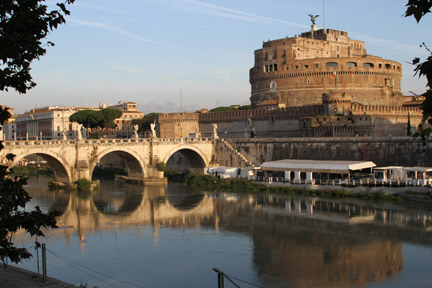
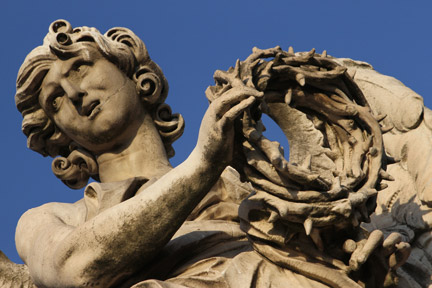

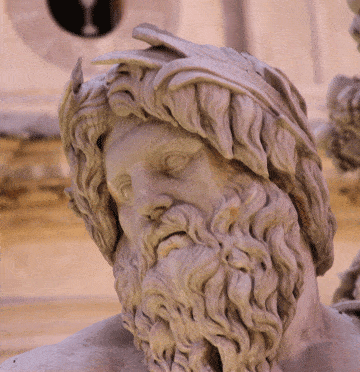
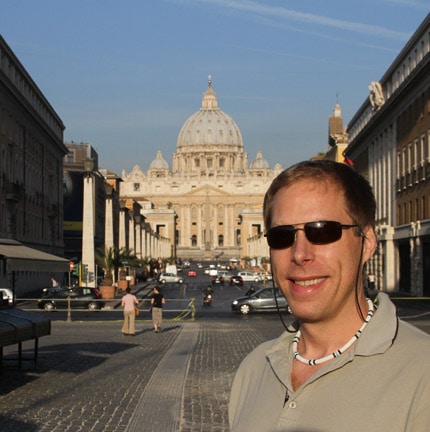
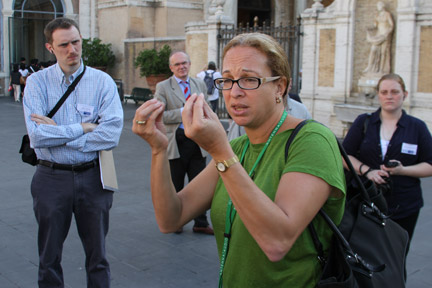
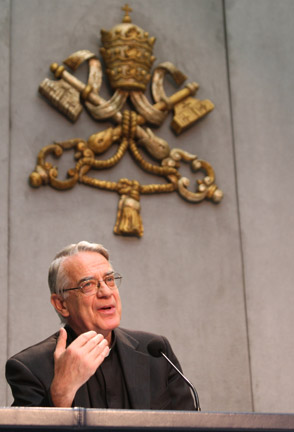
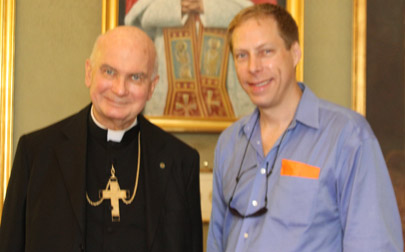
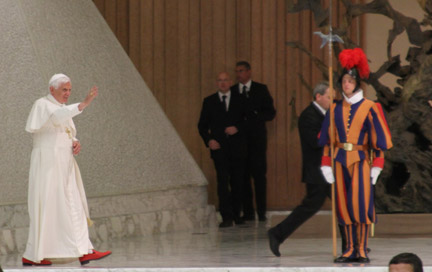
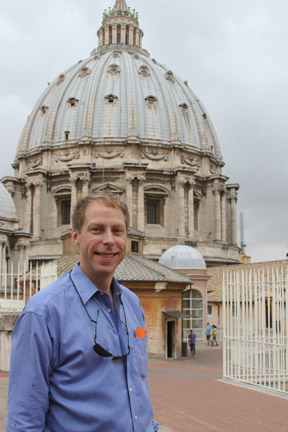
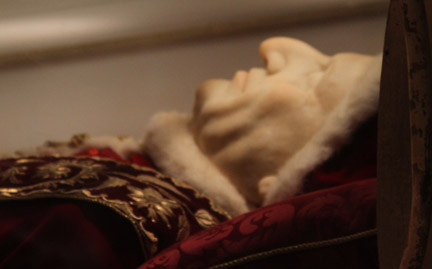
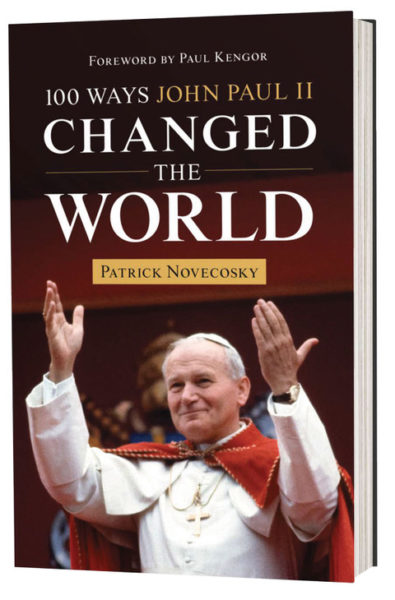
[…] three blog posts (1, 2, 3) about the seminar have been read by people from around the world. Al asked me about why secular […]